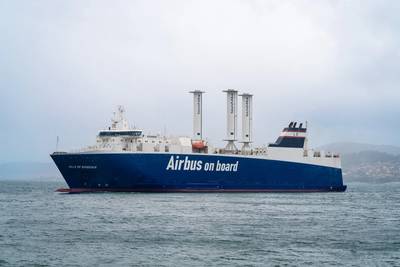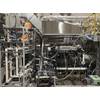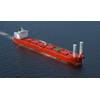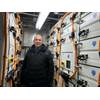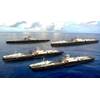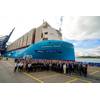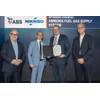The Power of Now: Sailing Toward Shipping’s Climate Goals
When Bertrand Charrier worked with Jacques Cousteau four decades ago on the development of a revolutionary sail for the maritime industry, the time for widescale adoption of wind power wasn’t right. Now, he argues, there’s simply no time to waste.
“Sometimes the best discoveries are rediscoveries.”
Bertrand Charrier is a champion of simplicity. Sitting in a comfortable chair overlooking the rolling fields of rural France, he delivers frank observations backed by a blend of common sense and scientific expertise.
The maritime industry, he opines, will not reach its ambitious climate goals at its current trajectory of technology innovation and adoption. The global system of production and consumption must change. There is plenty that can be done now to reduce emissions. And, most crucially for this conversation, we already have a green energy source that could, with greater awareness and adoption, transform the industry’s environmental performance. What’s more, it’s free.
“But we overcomplicate,” he states, with a nod to arguments over competing future fuels, systems and supply chains, “when sometimes the solutions are right here. Right in front of us. Now.”
But before we proceed, we need to rewind.
The Cousteau connection
Bertrand Charrier is a name within a niche. To the informed few, this personable, passionate Doctor of Physics is somewhat of a legend.
Now a Partner at bound4blue, known for its autonomous eSAIL suction sail technology, he was previously a head of innovation for the French Development Agency (AFD), Senior Vice President of non-governmental environmental organization Green Cross International and, for 15 years, a member of the team at the Cousteau Society, working closely with the late, great man himself on research and development.
It’s here where another key player blows in, namely wind.
Jacques-Yves Cousteau, Charrier explains, had a dream of building a vessel powered, at least in part, by renewable energy to mitigate its environmental impact. In 1981, fresh from completing a PhD on the Flettner rotor (rotating sail), Charrier joined him in his quest.
“I thought I was recruited because of my rotor sail expertise,” he says, “but it quickly became apparent he wanted something else!”
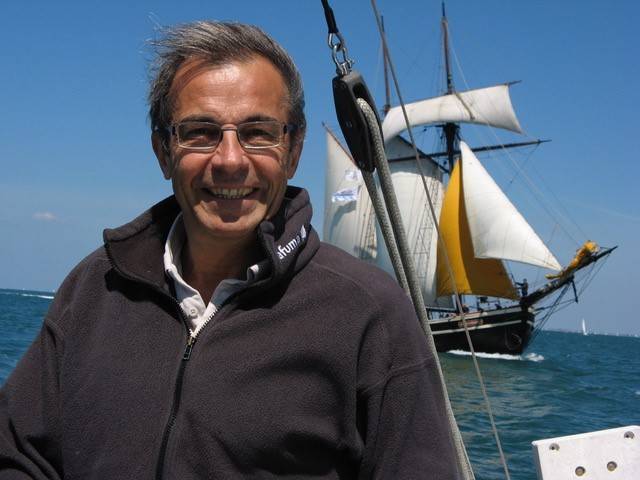 Bertrand Charrier of bound4blue (Photo: bound4blue)
Bertrand Charrier of bound4blue (Photo: bound4blue)
Turbo time
Charrier explains that while Cousteau was interested in the effect of the Flettner, he was put off by the complications and maintenance associated with the system’s moving parts (essentially a large spinning cylinder).
He was hunting a new innovation with greater simplicity, and efficiency, than a rotor.
“Captain Cousteau was an inventor,” he smiles, “he wanted to invent! So, there was a lot of time in the lab under the leadership of Professor Lucien Malavard.”
The result was a breakthrough they christened the Turbosail. This was a vertical cylinder with aerodynamics similar to an airplane wing to create lift/force, and a shutter and fan system to draw air in for greater efficiency. In testing, the thrust coefficient produced was between three and four times that of Marconi sails, making it a hugely attractive, and economical, green propulsion solution.
“In 1985 the Cousteau Society launched the new vessel Alcyone,” Charrier says, “with twin Turbosails to augment a diesel engine. It was a huge success. On the basis of this Captain Cousteau and I discussed how the innovation could transform maritime, working with existing propulsion systems to dramatically reduce fuel costs, emissions and consumption.”
“After the fuel crisis of the late 70s we thought the stage was set for adoption. But, as we all know, the price of fuel dropped away sharply in the mid 80s, and the desire within the industry to consider alternative solutions went with it.”
“Put simply, it just wasn’t the right time.”
But that, he argues, has all changed now.
 French connection - from left; Lucien Malavard, Jacques Cousteau, Bertrand Charrier (Photo: bound4blue)
French connection - from left; Lucien Malavard, Jacques Cousteau, Bertrand Charrier (Photo: bound4blue)
Understanding the challenge
Charrier isn’t alone in lamenting the slow progress toward the IMO’s ambitious green maritime goals (net-zero by 2050, with targets of GHG reductions of 20-30% by 2030 and 70-80% by 2040).
However, rather than criticising the status quo – he’s well aware of the pressures on key industry stakeholders, as well as the reluctance to invest in emerging, competing technologies – he prefers to focus on what needs to be done, and what can be done, to accelerate the process of change.
Charrier touches on numerous e-fuels with the potential to help decarbonise maritime, amongst them ethanol, hydrogen and ammonia, but argues that these are still some way off on the horizon – with huge infrastructure/supply chain, technology developments and investment required – while competition and price premiums will be “significant”.
“Obviously it’s not just maritime that needs these,” he comments. “Truck transportation, for example, is crying out for cleaner alternatives than diesel.”
Which brings him back to shipping’s ‘real’ alternative, the rediscovery of wind.
Optimizing benefits
“Let’s look at what can be done now,” Charrier stresses. “You can optimize vessel hulls to reduce drag and fuel consumption (air bubbles/cavity systems are promising here), and ‘slow steam’, with a reduction of one or two knots making a major difference to energy use and emissions. There’s a range of measures and I think we need to approach the issue like a jigsaw puzzle, piecing together solutions to make the optimal impact.”
Wind, he smiles, can be one of the central pieces.
Charrier joined bound4blue around two and a half years ago to share his Turbosail technical expertise with the ambitious young team. Using the technology as a foundation, the company has evolved the concept into the turnkey eSAIL suction sail, suitable for both retrofitting and newbuilds across a broad spectrum of industry segments.
This autonomous system, which unlike Flettners has few moving parts, leading to exceptionally low maintenance requirements, is simple, robust and highly efficient. With no need for crew input, it works to optimize power and reduce engine load, dramatically cutting vessel fuel consumption and GHG emissions
Leading shipowners and operators including Eastern Pacific Shipping, Odfjell and Louis Dreyfus Company have signed contracts for multiple eSAILs, which range in height from 12m to 36m, demonstrating commitment to position themselves at the vanguard of change.
“We believe this can be the start of a virtuous circle,” he comments. “The more owners of this calibre and industry stature adopt wind, the more awareness grows, the more installations are ordered by others, the more benefits are realised, and so on, and so on.”
“With the suitability of the system for such a wide variety of vessels we see huge potential here. For the business, of course, but more than that for the industry and the transition we must make.”
Win win
Charrier is keen to revisit the theme of timing.
In the 80s, he reiterates, it wasn’t “the moment” but now it most definitely is.
In terms of the suction sail technology, he says, “the stars have aligned” with the established bound4blue team, the proven nature and results of the system, and the growing attention from leading shipowners. As far as the industry is concerned, the incentives are clear:
“In an era of evolving regulations, such as the advent of the EU’s Emissions Trading System and the dynamic nature of CII ratings for example, the pressure, and costs, associated with compliance are ramping up. There is a real incentive to find alternatives. And, of course, there’s the cost of fuel itself in an increasingly competitive industry. All in all, this results in a convergence of commercial and environmental interests.
“Going green,” he states, “is just good business!”
Charrier, however, is far from naïve. He knows that wind won’t be for everyone, for all vessel operations, but he insists that, especially with greater understanding of weather routing and optimization, a surprising number of owners – particularly in deep sea segments – could unlock massive benefits.
“We have a green, efficient, cost-effective solution ready to help the industry meet its goals now,” he finishes. “We have to realize that there’s no need to reinvent the wheel. We can look back to go forwards, rediscovering the huge potential of wind.”
“Let’s keep it simple. It’s time to set sail.”


